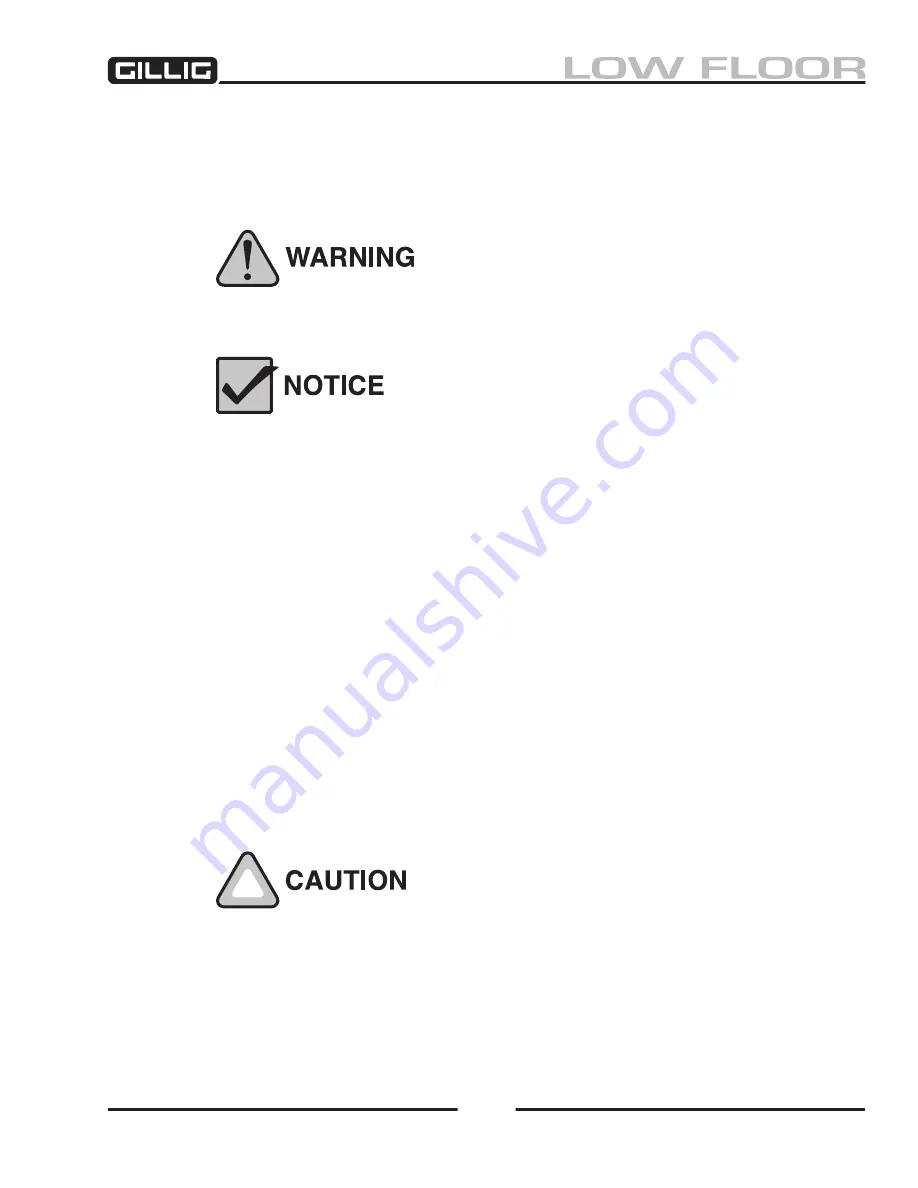
Body and Interior
483
Emergency Egress Windows
All egress window assemblies should be checked on a regular basis. Maintenance requires inspection,
removal of debris, lubrication of window components, and testing.
Maintenance of Egress Windows
Lack of maintenance can result in increased required force for window
opening operation in the event of an emergency situation.
Contamination and lack of lubrication are the most common and frequent
causes of the release mechanism pull force exceeding a safe level.
Refer to Figure 11-31 while performing the following maintenance procedures.
1.
Release Bolts—
From outside of the coach, with window open, check release bolts (also called
catch bars) (1-A) for dirt, foreign matter, debris or other contaminant that could restrict the bolt
sliding motion (1). Remove all debris. Ensure release bolt (catch bar) spacer blocks are securely
in place. Spacer blocks should be installed with point or angled side towards inside of main
-
frame. The spacer blocks across the bottom also function as a retainer for the release bolts (catch
bars).
2.
Wedge Spacer Blocks—
With the window open, wipe the egress frame seal with a vinyl cleaner
solution and clear any debris between the frames. Visually inspect and insure the upper most
wedge spacer blocks (3) on each side of the egress unit are secure and cannot slide in the track. If
a wedge spacer block is loose, remove block from channel with a screwdriver (2-A). If a spacer
block is loose, remove it from the channel, clean the area, and reapply a spacer block using Dol-
phin sealant.
3.
Cable—
Inspect the cable between the egress handle on one end of the cable and the spring on
the opposite end (1). Note where the cable tracks around the corner of the window, and inspect
for any debris or frayed cable. Clean debris away and replace frayed cable.
Use only aerosol white lithium grease. Other lubricants may carry
solvents (chlorine or fluorine compounds) that will damage the integrity
of the release bolts.
4.
Lubrication—
Lubricate (3) release bolts, the aluminum channel area where release bolts slide,
and cable with white lithium grease. Following lubrication, operate the handle several times to
“wet out” components.
Содержание LOW FLOOR
Страница 18: ...Specifications 18...
Страница 58: ...Preventive Maintenance 58...
Страница 110: ...Engine 110...
Страница 138: ...Transmission Driveline Rear Axle 138...
Страница 182: ...Suspension 182...
Страница 260: ...Air System 260...
Страница 420: ...Electrical System 420 Deutsch DT Series Connectors...
Страница 421: ...Electrical System 421...
Страница 422: ...Electrical System 422 Deutsch HD 10 Series Connectors...
Страница 423: ...Electrical System 423...
Страница 424: ...Electrical System 424 Deutsch HD 30 Series Connectors...
Страница 425: ...Electrical System 425...
Страница 442: ...Heating Air Conditioning 442...
Страница 486: ...Body and Interior 486 Driver s Seat Troubleshooting Use the following chart to troubleshoot the USSC seat...
Страница 492: ...Body and Interior 492 Figure 11 33 USSC Seat Assembly...
Страница 493: ...Body and Interior 493 Figure 11 34 USSC Seat Suspension Assembly...
Страница 495: ...Body and Interior 495 Figure 11 37 Seat Air Connections...
Страница 506: ...GILLIG CORPORATION 25800 Clawiter Road Hayward CA 94545 Phone 510 785 1500 Fax 510 785 6819 Printed November 2006...






























